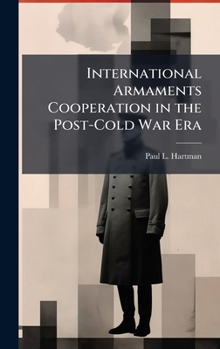International Armaments Cooperation in the Post-Cold War Era
Select Format
Select Condition 
Book Overview
During the height ofthe Cold War, the United States Department of Defense had a focused acquisition effort to produce major weapons systems. These weapons systems were developed as single service acquisition efforts. Their high costs were justified by their sophisticated technology, which enabled the U.S. military to gain and maintain air and ground combat superiority. Such acquisition practices significantly increased the defense budget, which peaked in 1985 at $414 billion. However, with the collapse of the Soviet Union and an absence of a single galvanizing threat to global security, the U.S. has been forced to drastically cut defense spending. Although there is no longer a central security concern for the U.S., there are new threats that require new defense objectives-- and containing these threats is not cheap. Senior defense leaders agree that the U.S. policy of fielding technologically superior weapon systems will not change. What alternative, then, will effectively enable the U.S. to meet reduced spending goals, yet maintain current national security levels? This thesis suggests that international armaments cooperation is one such alternative.
This work has been selected by scholars as being culturally important, and is part of the knowledge base of civilization as we know it. This work was reproduced from the original artifact, and remains as true to the original work as possible. Therefore, you will see the original copyright references, library stamps (as most of these works have been housed in our most important libraries around the world), and other notations in the work.
This work is in the public domain in the United States of America, and possibly other nations. Within the United States, you may freely copy and distribute this work, as no entity (individual or corporate) has a copyright on the body of the work.
As a reproduction of a historical artifact, this work may contain missing or blurred pages, poor pictures, errant marks, etc. Scholars believe, and we concur, that this work is important enough to be preserved, reproduced, and made generally available to the public. We appreciate your support of the preservation process, and thank you for being an important part of keeping this knowledge alive and relevant.





